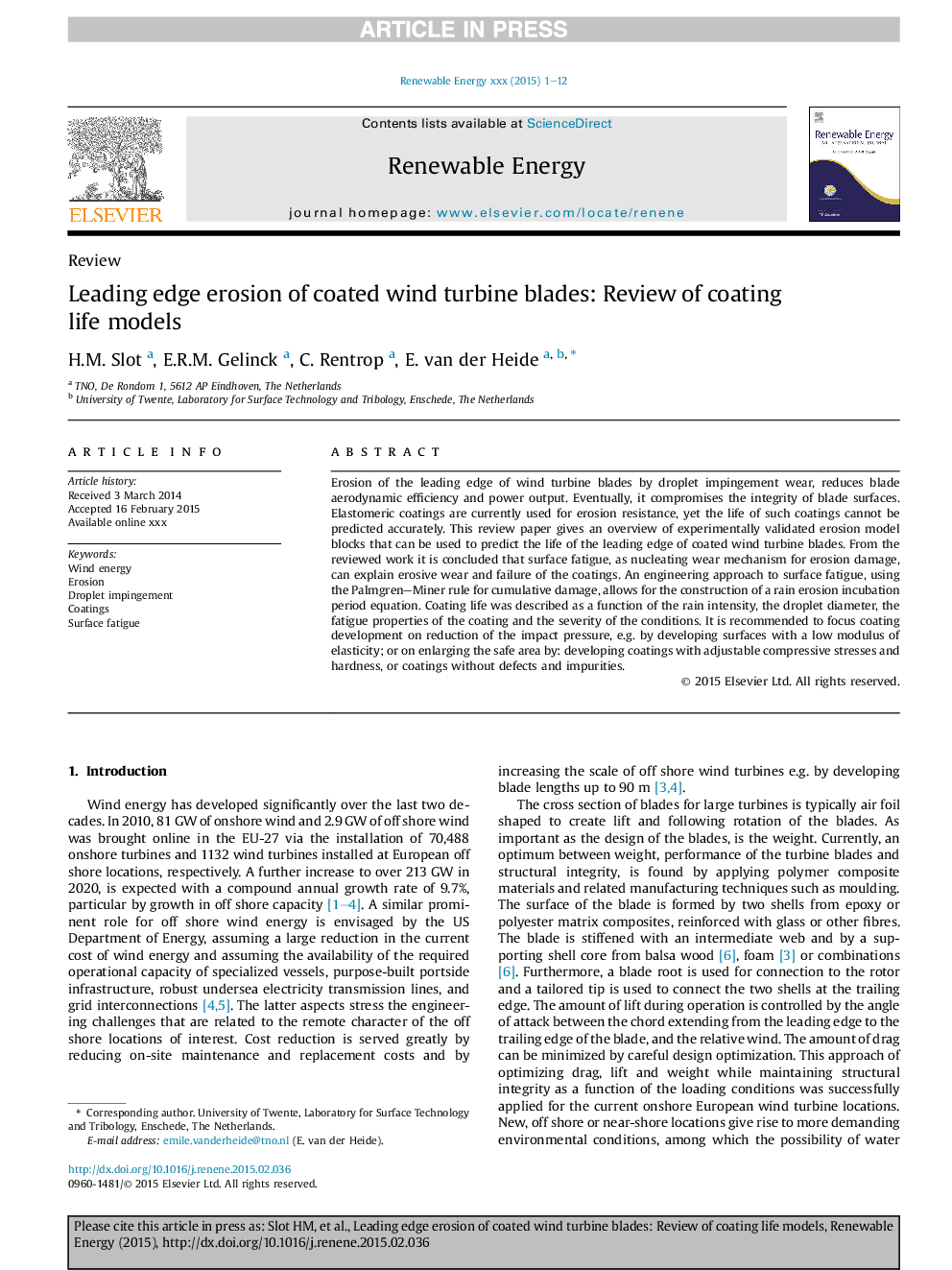| Article ID | Journal | Published Year | Pages | File Type |
|---|---|---|---|---|
| 6766914 | Renewable Energy | 2015 | 12 Pages |
Abstract
Erosion of the leading edge of wind turbine blades by droplet impingement wear, reduces blade aerodynamic efficiency and power output. Eventually, it compromises the integrity of blade surfaces. Elastomeric coatings are currently used for erosion resistance, yet the life of such coatings cannot be predicted accurately. This review paper gives an overview of experimentally validated erosion model blocks that can be used to predict the life of the leading edge of coated wind turbine blades. From the reviewed work it is concluded that surface fatigue, as nucleating wear mechanism for erosion damage, can explain erosive wear and failure of the coatings. An engineering approach to surface fatigue, using the Palmgren-Miner rule for cumulative damage, allows for the construction of a rain erosion incubation period equation. Coating life was described as a function of the rain intensity, the droplet diameter, the fatigue properties of the coating and the severity of the conditions. It is recommended to focus coating development on reduction of the impact pressure, e.g. by developing surfaces with a low modulus of elasticity; or on enlarging the safe area by: developing coatings with adjustable compressive stresses and hardness, or coatings without defects and impurities.
Related Topics
Physical Sciences and Engineering
Energy
Renewable Energy, Sustainability and the Environment
Authors
H.M. Slot, E.R.M. Gelinck, C. Rentrop, E. van der Heide,
